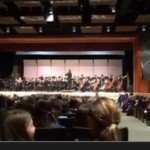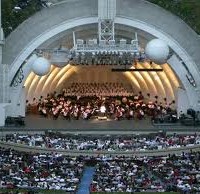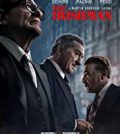- Two Thanksgiving Thoughts for the ACAPosted 11 years ago
- Shop til you Drop at the Healthcare Marketplace Part 2: Frustration!Posted 11 years ago
- An Early Casualty in the Affordable Care FightPosted 11 years ago
- Some Good News for a ChangePosted 11 years ago
Review: The Pennsylvania Philharmonic Bows in Pottstown

It is not often these days that a new symphony orchestra affords you the chance of hearing them at their first public concert, but that was the special event I experienced Saturday night at the Pottstown Center for the Performing Arts. The Pennsylvania Philharmonic is a regional orchestra that will have regular series in multiple locations across the state. It also has a major educational function that may be crucial in a time when symphony orchestras audiences are aging out and shrinking, and more ensembles are closing down than starting up. More of that later.
 The program was generous, five pieces, four substantial, at a time when orchestras are programming the Mahler 2 or Verdi Requiem alone. The orchestra seemed full of younger players with a scattering of veterans coming together for the first time. The music director is a tall willowy 40-ish man named Michael Butterman, unfamiliar to me from past concert-going. He has a clear beat, uses a baton, pays attention to his sections, dances a little on the podium, and gave a short talk to the audience on the programming at the start. He seems to communicate well with his new orchestra, and they in turn seemed to give him what he wanted.
The program was generous, five pieces, four substantial, at a time when orchestras are programming the Mahler 2 or Verdi Requiem alone. The orchestra seemed full of younger players with a scattering of veterans coming together for the first time. The music director is a tall willowy 40-ish man named Michael Butterman, unfamiliar to me from past concert-going. He has a clear beat, uses a baton, pays attention to his sections, dances a little on the podium, and gave a short talk to the audience on the programming at the start. He seems to communicate well with his new orchestra, and they in turn seemed to give him what he wanted.
The curtain opener was a brief, accessible rhythmic fanfare written in 2000 by Pennsylvania-based Jennifer Higdon. It is a pleasing, if forgettable, opener that got a lively response from the percussion session. Four Dances from the ballet Estancia by the Argentinian composer Ginastera followed, again rhythmic, South American with enough swing to get the audience moving in their seats in the malambo finale. After the interval, Copland’s four dances from Rodeo, ultra-familar to most concert-goers even if they cannot name the composer. Copland defines American symphonic music. You cannot see a movie or a PBS special about this country, its sweeping plains, its noble people without some ersatz Copland in the background. The Philharmonic did it proud.
No allowances were needed for the fact that this ensemble has just started playing together. Solos were well-executed. Sections blended and balanced. Butterman kept the music moving but did not skate over the emotional content beneath it. If you closed your eyes, you would not yet think this was the Philadelphia Orchestra yet, but that said, I have heard orchestras that play together regularly, major orchestras , that do not play this well after many seasons.
 The centerpiece of the evening was pianist Simone Dinnerstein, an A-list soloist who has given us a lot of Bach to date, in the G major Concerto by Ravel. She found sweetness and wistfulness in a composition that can sound more percussive and jazzy in other hands. There was speed and steel and volume when called for, but it is the aura of nostalgic longing that remained in the mind when she had concluded. The orchestra supported her skillfully. Execution had the right snap and virtuosity. She returned at the concert’s end with Gershwin’s Rhapsody in Blue, guaranteed to bring the house down which it did. Mention should be made of Arne Running’s sassy solo clarinet contributions which brought smiles to the ensemble on stage and pizzazz to Gershwin’s work. You know that you are in good hands when the orchestra’s body language is this positive.
The centerpiece of the evening was pianist Simone Dinnerstein, an A-list soloist who has given us a lot of Bach to date, in the G major Concerto by Ravel. She found sweetness and wistfulness in a composition that can sound more percussive and jazzy in other hands. There was speed and steel and volume when called for, but it is the aura of nostalgic longing that remained in the mind when she had concluded. The orchestra supported her skillfully. Execution had the right snap and virtuosity. She returned at the concert’s end with Gershwin’s Rhapsody in Blue, guaranteed to bring the house down which it did. Mention should be made of Arne Running’s sassy solo clarinet contributions which brought smiles to the ensemble on stage and pizzazz to Gershwin’s work. You know that you are in good hands when the orchestra’s body language is this positive.
 The day previously, I watched from the back of the auditorium as a slightly scaled down ensemble gave an hour-long program of music that kept 1250 hormonal high school students rapt throughout. Butterman covered the audience like the host of a day-time game show getting audience participation as the orchestra constructed a story and performed Saint-Saens, Berlioz, Grieg and Bernstein by way of illustration. The high-schoolers’ reaction was gleeful, if I can use that term, and made this writer wonder if this may not be the way to build back audiences of the future. It should also be noted that the instructional example of a diverse group of people cooperatively producing wonderful things together should be worth the cost of the event itself. Other orchestras take note. Taking the music to future concert-goers makes sense.
The day previously, I watched from the back of the auditorium as a slightly scaled down ensemble gave an hour-long program of music that kept 1250 hormonal high school students rapt throughout. Butterman covered the audience like the host of a day-time game show getting audience participation as the orchestra constructed a story and performed Saint-Saens, Berlioz, Grieg and Bernstein by way of illustration. The high-schoolers’ reaction was gleeful, if I can use that term, and made this writer wonder if this may not be the way to build back audiences of the future. It should also be noted that the instructional example of a diverse group of people cooperatively producing wonderful things together should be worth the cost of the event itself. Other orchestras take note. Taking the music to future concert-goers makes sense.
Bottom line, Pennsylvanians now have at least three great orchestras of note, the great Philadelphia Orchestra under the unique Yannick, the excellent Pittsburgh Symphony under Manfred Honeck — world contenders, wish they travelled more — and now the Pennsylvania Philharmonic under Michael Butterman bringing music to the People rather than the other way around. If this model succeeds, and I hope that it will, Pennsylvania will again have made another significant contribution to America after the Pennsylvania Rifle, the Conestoga Wagon, the cheese steak sandwich and the soft pretzel.
Curtis Rittenhouse
Addendum: this program repeats Sunday October 26 in York, Friday November 7 at Lehigh University and Sunday November 9 at West Chester University.



